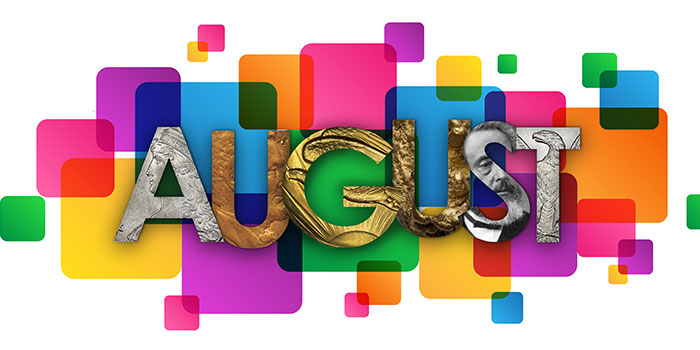
By CoinWeek …..
The dog days of summer are upon us, which means that it’s time to take a trip through the annals of United States Mint history. In this month’s Big Things, we see first strikings and releases of major coins, the end of a contentious coin program, the passing of major figures in American numismatics, and much, much more…
August 1, 1968: The United States Mint begins production of 1966 Kennedy half dollars.
August 2, 1838: New Orleans Mint closed as a precaution against the Yellow Fever.
August 2, 1909: The Lincoln cent enters circulation.
August 3, 1831: Robert H. Patton deposits 6 ounces of gold dust and Templeton Reid coins at the Philadelphia Mint for assay.
August 3, 1907: Famed sculptor and coin designer Augustus Saint-Gaudens dies of cancer.
August 5, 1909: Treasury Secretary Franklin MacVeigh orders a halt in the production of Lincoln cents due to the V.D.B. controversy.
August 6, 1892: Theodore Hofer is appointed superintendent of the Carson City Mint.
August 7, 1799: The Bank of the United States deposits $44,076.285 in French crowns for coining into silver dollars. Coins are struck and paid out on December 7.
August 7, 1939: President Roosevelt signed a bill to end the production of commemorative coins authorized by Congress prior to March 1, 1939.
August 7, 1946: President Truman signs into law bills authorizing the production of the Iowa Centennial half Dollar and the Booker T. Washington half dollar.
August 14, 1969: New Philadelphia Mint facility opens. Philadelphia Mint installs new technology to produce bonded coin strip for the creation of clad quarters and dimes planchets. Strip to be shipped to Denver, which lacked the technology to create its own strip.
August 15, 1801: Mint delivers 3,299 gold eagles, warrant 214.
August 17, 1848: California Military Governor Colonel Richard B. Mason writes to the Adjutant General of the US in Washington, DC about the status of California gold discoveries and recommends the opening of a mint in San Francisco.
August 18, 1839: New Orleans Melter/Refiner James Maxwell dies.
August 20, 1878: Morgan dollar production begins at the Carson City Mint.
August 21, 1798: The mint closes due to the Yellow Fever outbreak.
August 23, 1799: Bank of the United States deposits $44,033.305 in French crowns for coining into silver dollars. Paid out January 21, 1800.
August 26, 1799: Mint strikes 185,000 cents from Boulton’s June/July planchet delivery.
August 26, 1801: Mint delivers 2,019 gold eagles, warrant 216.
August 27, 1840: Chief Engraver William Kneass dies. Gobrecht named Chief Engraver.
August 28, 1797: Mint Director Elias Boudinot draws up plans to shut down Mint operations in the event the Yellow Fever outbreak warrants it.
August 28, 2020: Basketball Hall of Fame 2020 colorized half and dollar goes on sale.
August 29, 1794: The mint halts the production of copper coinage to prepare for the production of silver coinage.
August 29, 1801: Mint delivers 1,820 gold eagles, warrant 217.
August 30, 1802: Mint delivers 1,834 gold eagles, warrant 255 (Breen believes these dated 1801).
August 31, 1797: Henry Voight writes to Mint Director Boudinot requesting permission to close the Mint. Voight informs the Director that the treasurer, Dr. Nicholas Way has fallen ill with the disease. Voight closes the Mint that day.
August 31, 1862: Philadelphia Mint reports having 368 cents on hand, signaling just how acute the coin shortage had become at the outset of the Civil War.
August 31, 1879: Chief Engraver William Barber dies.
Also in August
August 1795: Artist Gilbert Stuart submits his Draped Bust design to the Mint for review.
August 1833: Mint Director Moore writes Bolton to order five tons of planchets (933,333 half cents).
August 1834: Motto removed from reverse of U.S. gold coins.
August 1835: Chief Engraver William Kneass suffers a major stroke; never fully recovers. Director Robert M. Patterson hires Thomas Sully and Titian Peale to redesign American silver coins.
August 1837: Minting equipment arrives at Charlotte Mint.
August 1969: U.S. Mint Director Eva Adams resigns.




